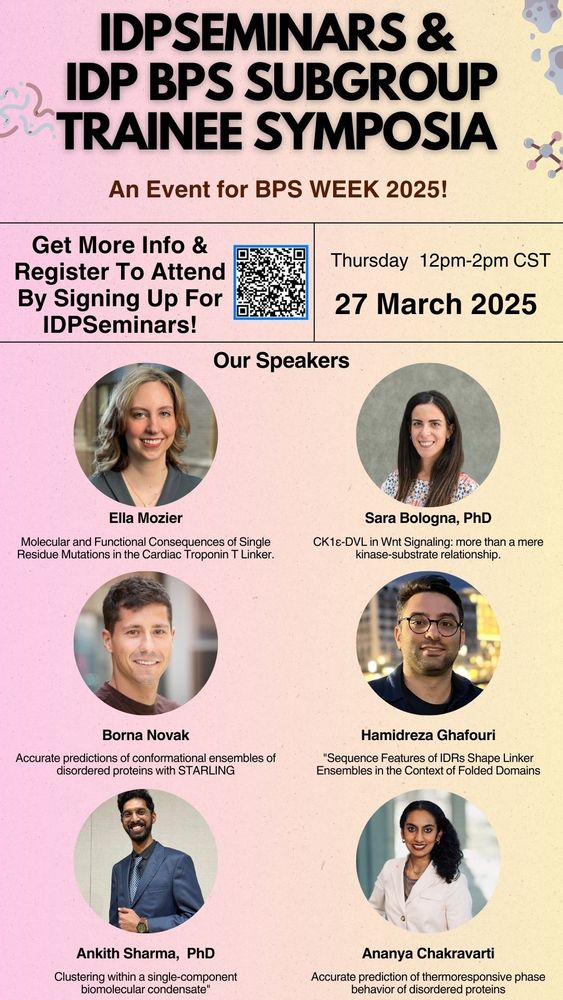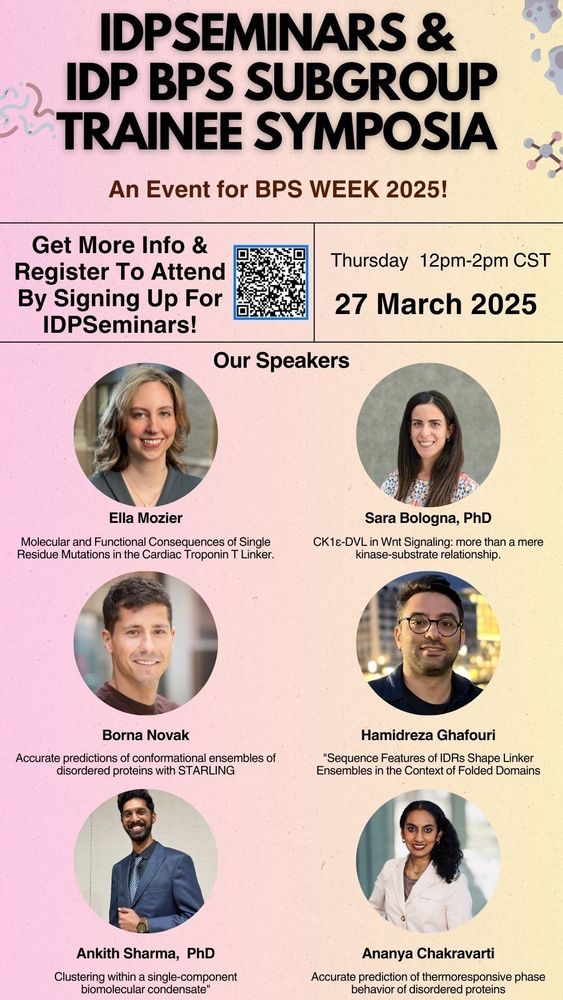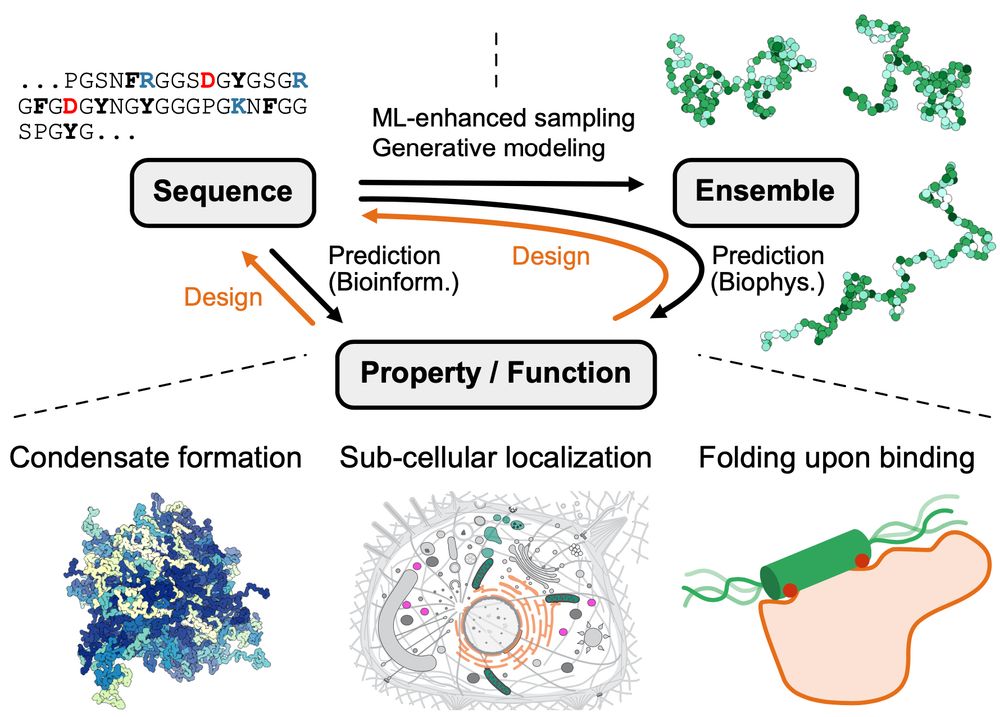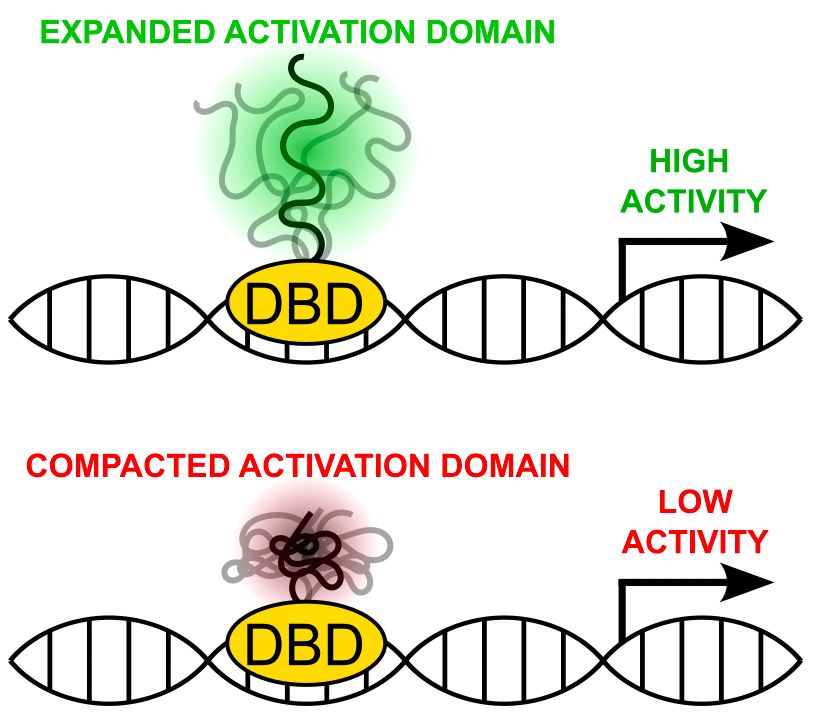

Join us on Mar 27, 12–2pm CST for 6 exciting talks focused on Intrinsically Disordered Proteins as part of #BophysicsWeek2025 with the @biophysicalsoc.bsky.social Sign up now using the QR code below!

Join us on Mar 27, 12–2pm CST for 6 exciting talks focused on Intrinsically Disordered Proteins as part of #BophysicsWeek2025 with the @biophysicalsoc.bsky.social Sign up now using the QR code below!
Join us on Mar 27, 12–2pm CST for 6 exciting talks focused on Intrinsically Disordered Proteins as part of #BophysicsWeek2025 with the @biophysicalsoc.bsky.social
Sign up now at docs.google.com/forms/d/1L_K...

Join us on Mar 27, 12–2pm CST for 6 exciting talks focused on Intrinsically Disordered Proteins as part of #BophysicsWeek2025 with the @biophysicalsoc.bsky.social
Sign up now at docs.google.com/forms/d/1L_K...
www.biorxiv.org/content/10.1...

www.biorxiv.org/content/10.1...
authors.elsevier.com/sd/article/S...
Led by @sobuelow.bsky.social and Giulio Tesei

authors.elsevier.com/sd/article/S...
Led by @sobuelow.bsky.social and Giulio Tesei
Also, in case you were unsure, graphic design is our passion.
pubs.acs.org/doi/full/10....
Also, in case you were unsure, graphic design is our passion.
pubs.acs.org/doi/full/10....


www.cell.com/biophysrepor...
🧵 Highlights:

www.cell.com/biophysrepor...
🧵 Highlights:

